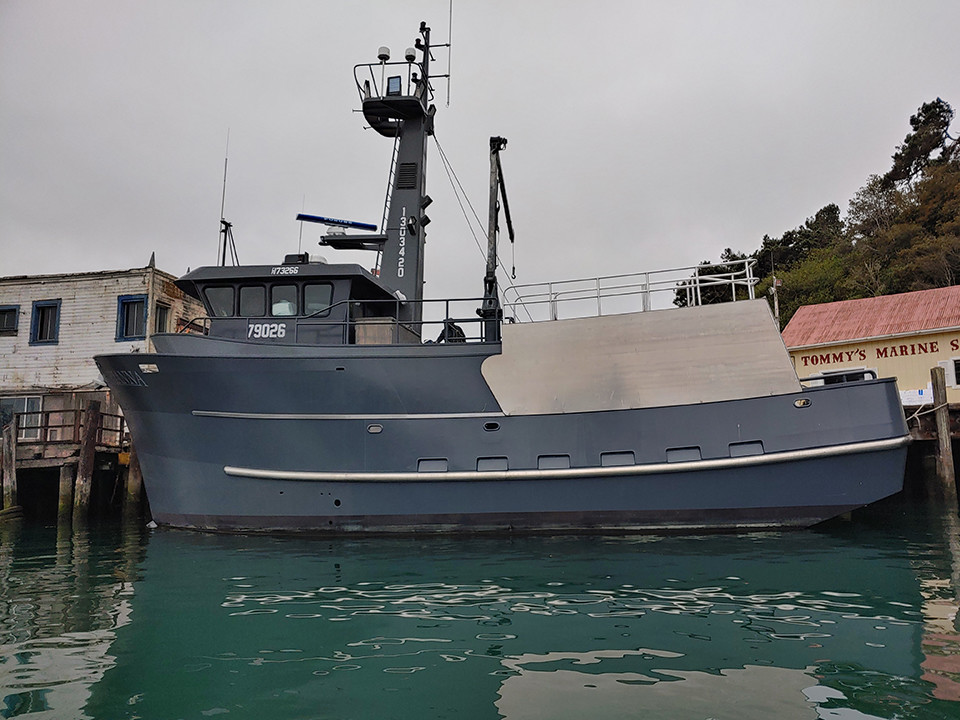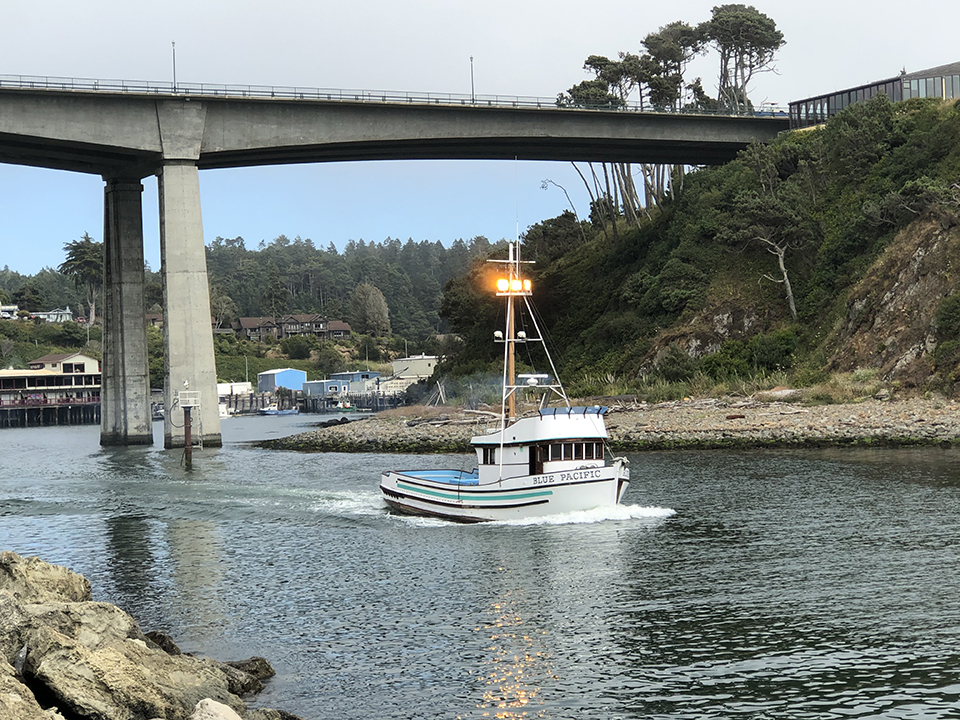What kind of shape would you expect a 57-year-old wooden dragger and crabber to be in that hadn’t undergone major restoration work? Well, if it’s the Blue Pacific built by Makela Boatworks in Fort Bragg, Calif., the answer would be “pretty good shape.”
The brothers Fred and Nick Makela started Makela Boatworks in 1947, building and repairing wooden boats. Today, the boatyard still specializes in working on wooden boats, but now it’s under the direction of Fred’s son, Howard, who recently finished some extensive repairs on the 56' x 16' Blue Pacific that his father and uncle built in 1963. “This is the first major work that’s been done on it,” says Howard Makela. He doesn’t refer to it as rebuilding or a major restoration; it’s just that “after all these years, they always need a little TLC.”
A good reason the more than five-decades-old wooden boat has been able to put off extensive repairs is because she was built with “good lumber and materials. The wood is not rotten, it’s more worn out,” Makela says. Replacing that worn-out wood is what Makela has done, mostly from the back of the pilothouse to the stern. That means steaming in new oak frames and installing three new deck beams under the winches. Covering boards and some decking were removed and replaced to access the deck beams and to refasten other deck beams; otherwise new decking went down as needed.
Half the outside planking on the port and starboard bulwarks was replaced, along with new bulwark rail caps. Makela looked around the lazarette and determined that it “seemed like it was in very good shape.” One thing Makela has noticed was the condition of the Monel ring nails that had been used as fastenings. “For 1963 fastenings they were in real good shape, though a little green.” He emphasizes that the fastenings weren’t galvanized nails. The replacement fastenings were bronze and stainless screws.

At Noyo Boatworks, another Fort Bragg boatyard, The Trianna was launched July 2, about a year after it was expected to go in the water, and on July 17 went on sea trials. That marked the end of a very long, arduous and painful process. For the Trianna’s builder, Jason Malsom, there was a lot riding on the building of the 60' x 27' 6" Jensen Maritime Consultants-designed steel longliner and crabber. This was the first boat for Malsom, who had worked for Chris Van Peer at Van Peer Boatworks. When Van Peer retired in November 2017 Malsom bought the boatyard’s equipment, rented the boatshop, renamed it Noyo Boatworks and then took on building the Trianna for Fort Bragg fisherman Nick Jardstrom.
By early September 2018 the steel hull was mostly plated up, and Malsom said things were going “pretty well.” He had even talked with a Seattle fisherman about building a 58-footer. But it wasn’t long before things started going downhill. There had previously been some design issues that had to be resolved, but the main problem was finding qualified welders. It’s an issue that other boatyards have had as well. For a long time it was only Malsom and one other welder working on the boat. Then for about six months it was just Malsom welding steel plating together.
In July 2018, when the boat was about halfway completed, Van Peer came to work with Malsom. (Van Peer also helped build the Ocean Challenger for Jardstrom’s father in the 1980s.) Van Peer’s friend Rae Dean Barker also started working for Malsom, helping Van Peer with things such as building the top house, putting it on the boat, helping to install engines and preparing parts for welding. “She can do just about everything,” Van Peer says.
With about three or four months to go, “Justin Sanders, a good young welder came along,” says Van Peer, and that helped ease the burden. Then Jardstrom “had his crew come and work on it.” (Jardstrom did not want to talk for the story other than to say his 58-foot Keltie, a crabber and longliner, is for sale. Jason Malsom was unavailable.)
The covid-19 virus did its part to build the stress level by making it very difficult to get materials. “Shipping was already terrible in this area,” says Van Peer, “and it got a lot worse.” Some of the materials that took a long time getting to Noyo Boatworks included insulation, pumps, compressors, condensers and chillers.
In the end, Van Peer describes the Trianna as “a very nice boat.” He especially notes the work of a couple of good carpenters and cabinetmakers that “did a very nice job in the galley, crew’s quarters and tophouse.”







